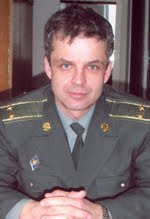Electrotyping is a chemical method for forming
metal parts that exactly reproduce a model. The method was invented by Moritz
von Jacobi in Russia in 1838, and was immediately adopted for applications in
printing and several other fields. Electrotyping produces "an exact
facsimile of any object having an irregular surface, whether it be an engraved
steel- or copper-plate, a wood-cut, or a form of set-up type, to be used for
printing; or a medal, medallion, statue, bust, or even a natural object, for
art purposes." In art, several important "bronze" sculptures
created in the 19th century are actually electrotyped copper, and not bronze at
all; sculptures were executed using electrotyping at least into the 1930s.
As with metal casting and
stereotyping, a mold is first formed from the model. Since electrotyping
involves wet chemical processes and is done near room temperature, the molding
material can be soft. Materials such as wax, natural latex, and ultimately
ozokerite were used. The mold's surface is made electrically conducting by
coating it very thinly with fine graphite powder or paint. A wire is attached
to the conducting surface, and the mold is suspended in an electrolyte
solution. When the copper layer on the mold grows to the desired thickness, the
electric current is stopped. The mold and its attached electrotype are removed
from the solution, and the electrotype and the mold are separated.
First electrotypes of some famous
ancient statues were installed in the Catherine Park under Emperor Alexander II.
In 1859, twenty six copper electrotypes by Johann Hamburger were brought by the
architect Ippolito Monighetti to Tsarkskoye Selo for placement at the Cameron
Gallery. They finally found their places around the park instead.
There is one monument in Poltava that also was created by using electrotyping.
The monument on the place where Peter I had a rest after the battle of Poltava
was created by Johann Hamburger, one of
the best masters of electrotyping in Russian Empire, by drawings
made by Professor Charles Bruleau. The monument
was unveiled on June 27th 1849 in Poltava. In the end of 1930s the monument was
almost completely disassembled. Bun in 1939 unexpectedly Josef Stalin decided
to organize a huge celebration of the 230th anniversary of the
Battle of Poltava. As a result, early 1939 the monument was reconstructed in hurry
in its original shape. During the German occupation of Poltava (1941- 1943),
all bronze decorations of the monument were taken to Germany for remelting.
Only in the early 1950s was this monument reconstructed close to its original
form.





0 comments:
Post a Comment